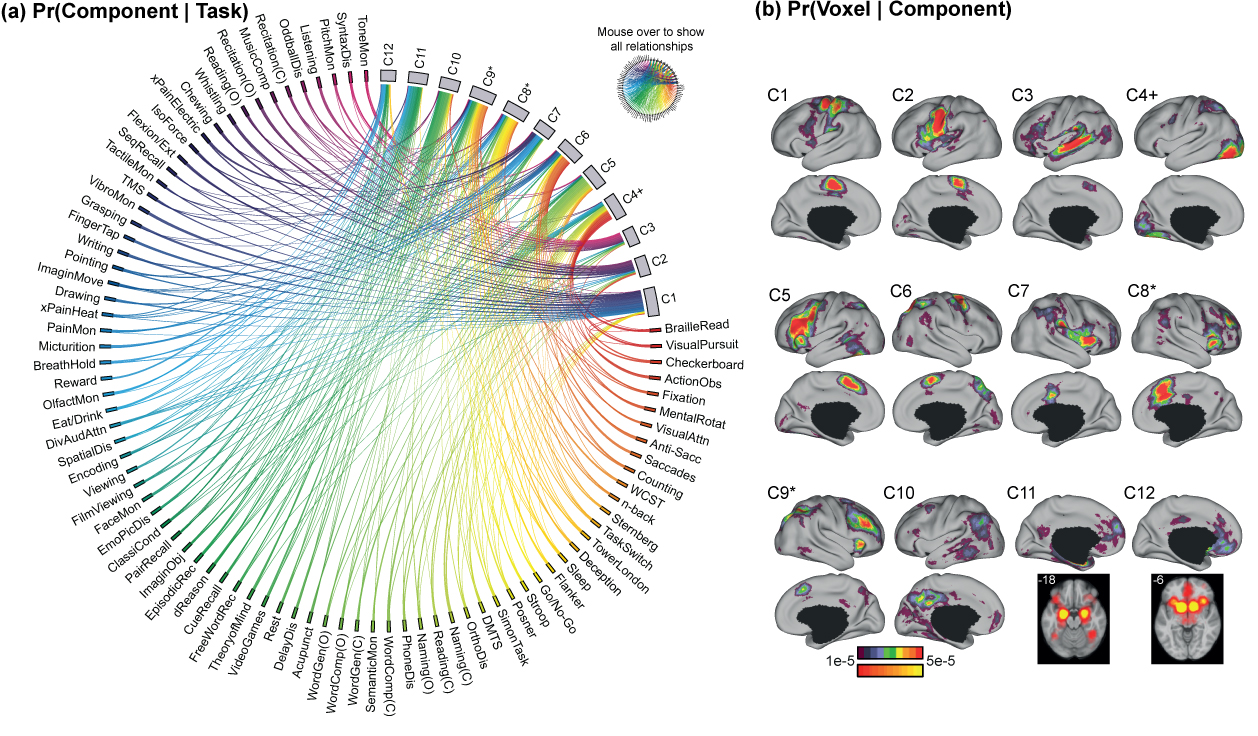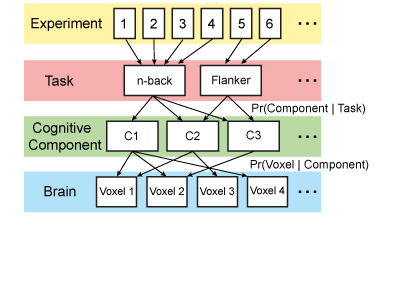
 Please see our paper Functional Specialization and Flexibility in Human Association Cortex for details. The current version was updated on 20 January 2015.
Please see our paper Functional Specialization and Flexibility in Human Association Cortex for details. The current version was updated on 20 January 2015.
Slow connection? Download a zip file (30 MB) of this page and supporting images here. You can also download excel sheets and nifty volumes of the components here here.

(Caption for figure above). 12-component model estimates. * indicates components that are unified in 11-component model; + indicates component that splits in 13-component model.
(a) Probability of tasks recruiting different components Pr(Component | Task). The components, C1 to C12, lie on the top right. The 83 tasks lie in the remaining segments of the circle. For the purpose of visualization, tasks with similar Pr(Component | Task) are more closely positioned and have similar associated colors. Each line connects one task with one component. The thickness of the lines is proportional to the magnitude of Pr(Component | Task), with the ends flared for easier visual comparison. Note that these probabalistic associations sum to 1 for each task.
(b) Probability of components activating different brain voxels Pr(Voxel | Component). The cerebral hemisphere with the stronger activation is shown, although most components have high probabilities of bilateral activation. An exception is component C5, which has high probability of activating the left, but not the right, hemisphere. Many components, especially C11 and C12, also activate subcortical regions. Note that these probabilistic associations sum to 1 for each component.